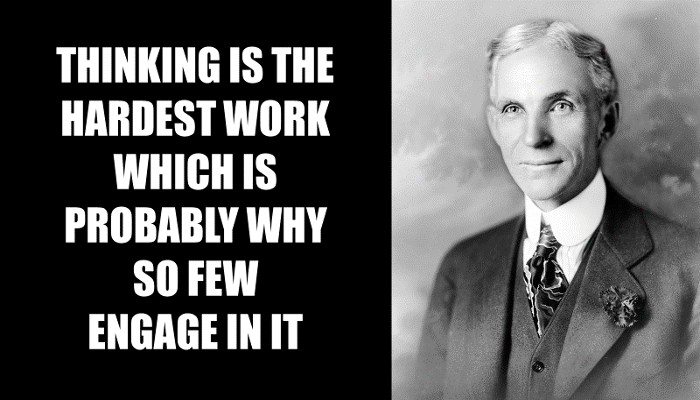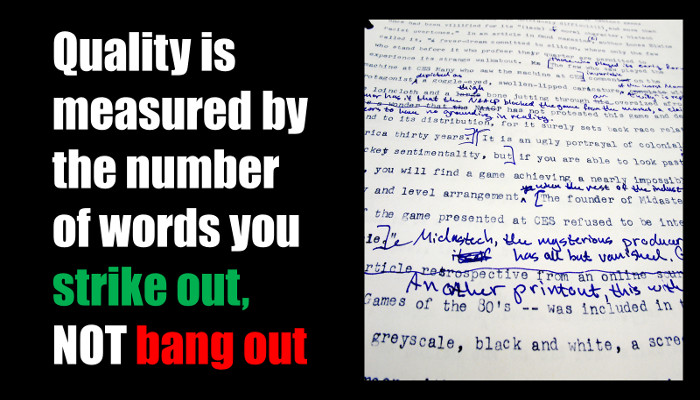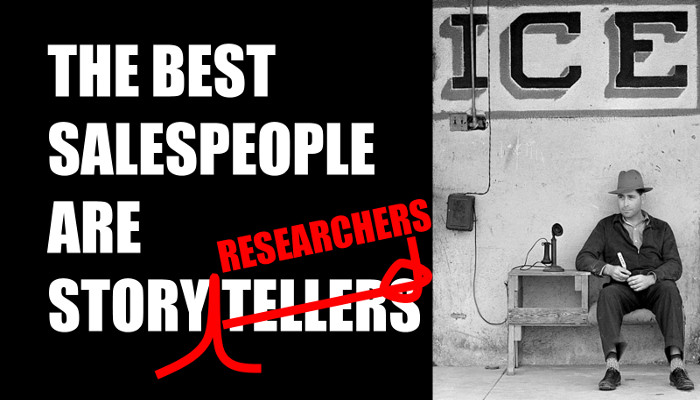by Ron Ploof | May 7, 2018 | Business Storytelling

The request comes in similar forms. “Ron, can you “bang out,” “throw down,” “slap together,” or “crank out,” a few PowerPoint slides for me?” Evidently, sharing one’s brilliant insight is as simple as communicating through bullet-speak.
Bullet-speak was developed at the turn of the twenty-first century. It’s a communicable disease that spreads from co-worker to co-worker as employees react to short-term requests that deserve longer-term reflections. The disease spreads effortlessly because bullet-speak requires very little skill. It only requires a host that can operate a mouse and pound hamhandedly on a keyboard to spray bullets with abandon. Rat-a-tat-tat.
Bullet-speak is easy. Storytelling is hard. Bullet-speak thrives on mindless reaction. Storytelling emerges from thought. Therefore, if employees are to have any shot at becoming better communicators, they’ll have to do more thinking. And therein lies the problem.
Henry Ford best described the monumental task before them. “Thinking is the hardest work there is, which is probably the reason why so few engage in it.” 1
Until organizations start rewarding the hard work necessary to convey meaning, they’ll continue to remain stuck in the language of bullet-speak.
But that would require change.
Rat-a-tat-tat.
And such a change would be terrifying.
Rat-a-tat-tat.
Business storytellers need their leaders to stand up for them–leaders like General James Mattis, the former commander of U.S. Central Command who once said that “PowerPoint makes us stupid.” 2 Organizations need leaders with guts, like Amazon’s Jeff Bezos, who not only banned PowerPoint, but he replaced it with something radical. He requires his employees to “…compose 6-page narrative memos, and he starts meetings with quiet reading periods—’study halls’—in which everyone reads the memo from beginning to end.” 3
As a storyteller, I’d welcome such an opportunity. But to be fair, I can also see how terrifying it would be for someone who had successfully navigated their career through a mastery of bullet-speak.
Can you imagine what is was like for those first Amazonians to present using subjects and predicates instead of bullet-speak? And while that change may have elevated their blood pressures, can you also imagine what it was like when they bared their souls before the ‘study halls’ as peers read those six pages in silence?
Since I’ve never been a part of one of these meetings, I can only imagine what would happen next. While It’s likely that the team will have a better dialog about the topic, I also see a potential side-benefit. Team building could emerge as future presenters reached out for help to craft better prose.
But alas, that would require the hardest work there is, which is why most companies will likely continue down the same bullet-ridden path.
Rat-a-tat-tat.
Photo Credit: Library of Congress, Henry Ford, photo taken by Hartsook circa 1919. http://www.loc.gov/pictures/item/94506959/
by Ron Ploof | Apr 16, 2018 | Business Storytelling

I learned a valuable writing lesson from a movie scene of Ernest Hemingway staring at the blank page. A piece of cardboard with handwritten numbers leans against the wall behind his typewriter. After an awkward moment, Hemingway pencils a zero onto the cardboard. As the camera pulls away, we see that it’s the third consecutive day with a zero. One of the world’s greatest writers reminds us that writing is a marathon instead of a sprint.
But, that’s not what I’ve been seeing recently, as more and more social media posts describe how someone “banged out” ten-thousand words of their next book over the the course of a weekend. Most of these posts are subsequently rewarded with dozens of congratulations for the accomplishment. This may sound curmudgeonly, but what exactly did they accomplish? It’s like congratulating someone for completing a marathon without doing any training. While it’s possible to complete all 26 miles untrained, it’s impossible to do it well.
Banging out ten-thousand words is an accomplishment, it just isn’t the accomplishment. Every good writer knows that those first 10,000 words will contain something like 2,500 nuggets of gold hidden among 7,500 pieces of iron pyrite. And the only way to separate them? Through the hardest part of writing: editing. Magic happens in the editing.
I’ve been working on a manuscript for over a year. Last weekend, I wrote 5,000 words, yet the word count on Sunday evening was actually smaller than the word count on Saturday morning. If I only measured my writing productivity through word count, last weekend would have been considered an #EpicFail.
But, that’s not my goal. My readers don’t care about how many words I’ve “banged out.” They only care about the ones that survived many rounds of ruthless editing.
It’s not the amount of words you write. It’s about the amount of words you keep.
Photo Credit: mpclemens published the image, A lot of ink spilled, through CC BY 2.0.
by Ron Ploof | Apr 9, 2018 | Business Storytelling

I first read SPIN Selling by Neil Rackham thirty years ago. My intent was to learn about high-end selling. What I learned instead was the power of story research.
Most sales training is built upon three skills:
- probing
- objection handling
- closing
But Rackham’s research found that the most successful sales representatives didn’t excel in these areas. His team found that while these skills proved effective for low-value, transactional sales, they fell short as price-tags rose and lead-times extended. For these expensive sales, he recommended using his SPIN strategy–an acronym that represents Situation, Problem, Implication, and Need-Payoff.
While I don’t remember the book making this connection directly, the SPIN strategy is the foundation of any business story. For example:
Once upon a time, everything was going well.
Then a situation happened.
The customer researched the situation and found a big problem.
If this big problem wasn’t solved, the customer would suffer implications.
Although the customer found many solutions to the problem, she wondered, “Was it worth the cost?” What was the need-payoff? Would the solution solve the problem, stave the implications, and ultimately, provide a payoff?
The best salespeople aren’t necessarily great storytellers. They’re great researchers. They ask questions to uncover a prospect’s situation, the problem to solve, the implications of not solving the problem, and need-payoff. If they’ve done a good job at uncovering these things, they’ll have gathered the ingredients for the ultimate sales pitch: the customer’s story.
Photo Credit: Lee, Russell, photographer. Ice for sale. Harlingen, Texas. Cameron County Harlingen Texas United States, 1939. Feb. Photograph. Retrieved from the Library of Congress, https://www.loc.gov/item/2017782201/


